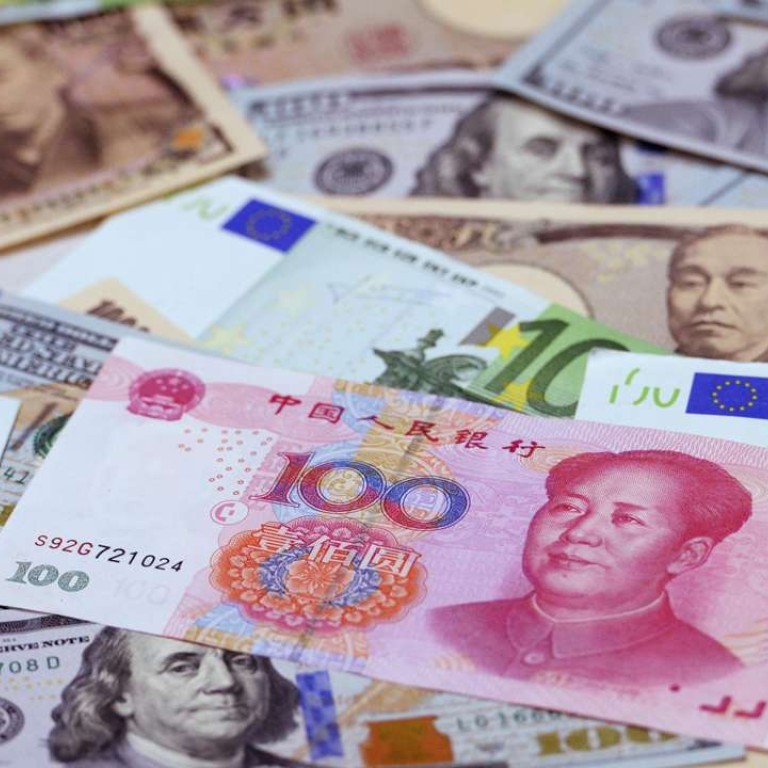
US dollar’s recent slide may have helped Chinese equities
Japan and the euro zone countries remain in “real trouble,” analyst says.
“You can’t always get what you want,” sang the Rolling Stones, and that’s never truer than when it comes to the trilateral relationship between the dollar, the yen and the yuan.
Writing about the slide in the value of the dollar after February’s G20 meeting in Shanghai, Societe Generale analyst Albert Edwards made the point on May 12 that the greenback’s “recent slide may have helped equities and China, but Japan and the euro zone are in real trouble.”
That thought also crossed the mind of Stephen Jen at SLJ Macro Partners.
While “driving down the dollar, the US Federal Reserve might believe there is one way to put out the fire in China,” Jen wrote on 11 May, “the loser in this implicit deal had to be Japan, which, unlike China, prefers a hawkish Fed to drive up” the value of the dollar versus the yen, he said.
Logically therefore, the more recent bounce in the dollar’s value should suit Tokyo but not necessarily Beijing.
Japan’s policymakers have undoubtedly been extremely vocal in recent months, consistently complaining about “disorderly” moves in the currency markets as the yen has gained some strength versus the dollar.
Of course, Japanese policymakers were conspicuously silent on the issue of disorderly currency markets when traders devalued the yen against the dollar as markets concluded such a move was a natural accompaniment to the monetary and fiscal policy settings adopted following Shinzo Abe’s re-election as Japan’s Prime Minister in 2012.
In truth, currency traders both recognised not only the currency implications of Japan’s fiscal and monetary policy settings but also that the silence from the United States at that time reflected a lack of opposition to the yen’s fall versus the dollar, at least for much of the devaluation.
More recently, any understanding from the US side of Japanese concerns about a stronger yen has been in short supply, perhaps exemplified by US Treasury Secretary Jack Lew’s April 15 pointed comment at G20 summit in Washington that “despite recent yen appreciation, foreign exchange markets remain orderly.”
Lew didn’t sound like a man in favour of a renewed rise in the dollar versus the yen.
As Chinese policymakers grapple with China’s own economic challenges, a stronger yen, if it were to also be reflected against the yuan, would no doubt be attractive to Beijing, given China is now targeting the value of its currency against a basket of others, but it would be a mistake to think that that was any factor in Lew’s thinking.
Indeed the US Treasury has both China and Japan in its sights when it comes to their respective foreign exchange policies unveiling a new monitoring list which included both countries, among others, on 29 April.
All in all it might appear to both Beijing and Tokyo that Washington is calling the currency tune, but even that’s not entirely true.
Indeed, in the weeks after Lew’s comment, and surely to Tokyo’s satisfaction, the yen did in fact weaken versus the dollar, as traders positioned themselves in the hope, though ultimately disappointed, for renewed policy action from the Bank of Japan.
And while some of that yen weakness has subsequently been unwound after the Bank of Japan opted to stand still on policy on 28 April, the yen’s rise versus the greenback has, at least for the moment, been seemingly arrested.
That situation might not actually wholly suit policymakers in Beijing, Tokyo or Washington but traders don’t aim to please policymakers, and prefer to identify the next set of drivers in the currency market.
Societe Generale’s Edwards, for example, believes wage inflation in the United States will force the Fed’s hand on rates and “the dollar will resume its rally and the pain in the euro zone and Japan will be transferred back to China.”
SLJ’s Jen feels that as long as US economic data does not collapse “the risks are now biased to the upside on the Fed Funds Rate and the dollar.”
However SLJ adds the caveat on Japan that “after artificially devaluing the (yen) through aggressive monetary operations, the market rate of (the dollar versus the yen) was elevated relative to its fair value.”
Given SLJ sees fair value at 91 yen to the dollar, that suggests little or no upside for the dollar versus the yen even if the greenback registers broader gains.
A new scenario might unfold that still fails to satisfy either Beijing, Tokyo or Washington entirely. But maybe that’s the true essence of the trilateral relationship between the dollar, the yen and the yuan. No one gets all of what they want.

